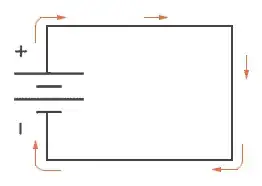I have always stumbled when remembering which current flow notation to use. In my mind, it's by default conventional current flow.
But, I also have in mind electron flow notation.
Do you know of a mnemonic (i.e. a quick memory trick) to remember the direction of current flow?
According to the Wikipedia Anode article, "A common mnemonic is ACID, for "anode current into device", but I feel like there might be a better one for beginners.

